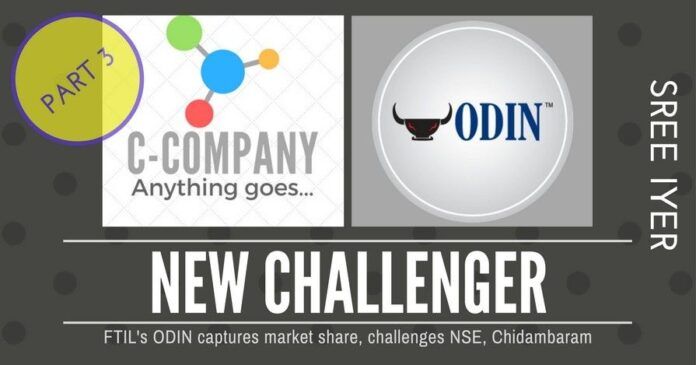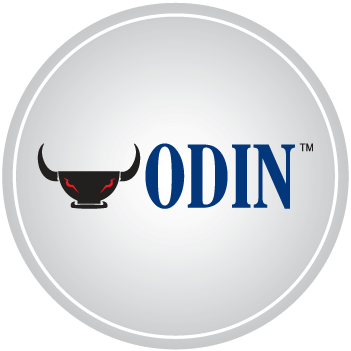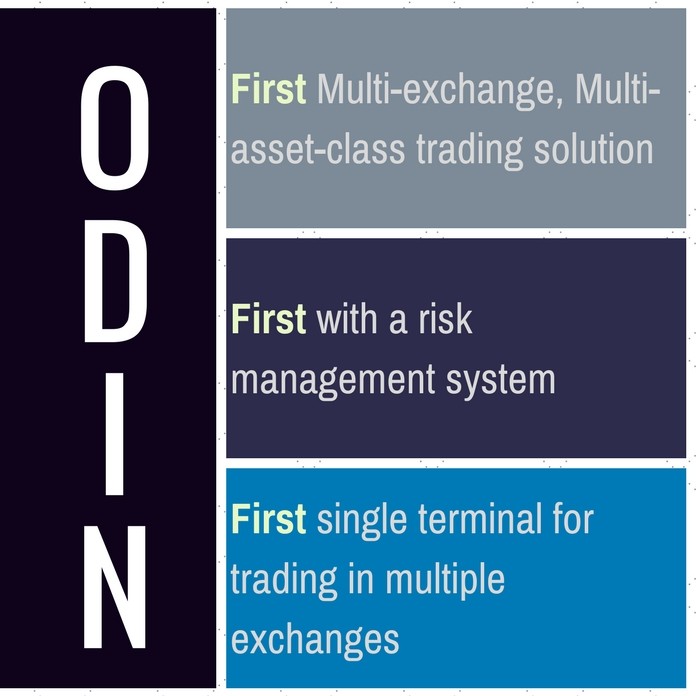
Part 1 of this series is titled C-Company – How Chidambaram made his fortune. Part 2 refers to the 3 weapons Chidambaram used to build his wealth. This is Part 3.
A new competitor is born
While the National Stock Exchange (NSE) was growing quickly under R H Patil, two engineers were toiling away in a boiler room. Jignesh Shah and Dewang Neralla, both of whom started their careers with the Bombay Stock Exchange (BSE) left to start their own venture, Financial Technologies India Limited (FTIL) in 1995. Both had gained valuable experience of how Stock Exchanges worked with their in-depth knowledge and understanding of functioning of global exchanges like NASDAQ, Hong Kong, and Tokyo Stock Exchanges. When it came to how Stock Exchanges operated in the new era of electronic trading, they knew a thing or two and were far ahead of their creed in the learning curve.
Chidambaram wanted nominal competition for NSE and for that there was BSE.
ODIN
Instead of seeking their fortunes abroad (Shah turned away a lucrative offer from Merrill Lynch), they decided to stay in India and started working 15 hour days. Jignesh Shah raised Rs.5 Lakhs (500,000) from mortgaging his home[1] and they set to work. As is typical for any startup they toiled hard and long and came up with their first product, Open Dealer Integrated Network (ODIN) for brokers. The going was tough at the beginning – they were competing with the likes of IBM and Oracle but they had found a niche – the Mom and Pop Broker firms, which could not afford the high prices of the US-based software, to begin with.

Word spread amongst the broker community about this low cost but feature rich software and their fortunes began rising as they could sell their products to even the big ticket brokerage firms. Within a short period ODIN had captured significant market share (almost 80% at its peak) and was the preferred software of choice for brokers.
Based on the success of ODIN, FTIL went public on the BSE in 1999. But Shah was just getting started. ODIN had several firsts to its credit (see Figure 2) – it was the first to offer Multi-exchange, Multi-asset-class trading solution in India. Multi-asset-class is a combination of asset classes (such as stocks or bonds, commodities, currencies) used as an investment. This was more complex as the technology brings together various products traded in different exchanges brought under one single platform leading to significant savings in the costs[2]. ODIN thus emerged in India as the first multi-Exchange, multi-asset, trading, and risk management system. Before that, brokers had to use dedicated terminals for each product of every stock exchange!
ODIN also made it easy to see trades to different exchanges on a single terminal. Before that, brokers had to use dedicated terminals for each platform!

A Performance Leader
ODIN was a scalable solution that ensured high-performance standards and could be easily deployed across varied locations with relative ease. It provides real-time connectivity (meaning the brokers could see instantaneous changes as trades happened at the exchanges) with the highest order execution speed and operational stability.
ODIN was put through its paces by Cisco[3], which subjected it to a series of rigorous tests. For the technically inclined, the report can be accessed at the end of this post.
Cisco concluded as follows:
Our tests show that ODIN has not only the capacity to handle current and future market loads, but is also capable of supporting operations over extended periods of time. The system is scalable, both horizontally and vertically, thereby providing the client with an ideal platform that can support the growing business requirements. The tests have also conclusively demonstrated that ODIN is a well-designed software that is robust and capable of functioning over the extended market period.
ODIN – Feature rich, kinder, gentler software
Some of the features of ODIN are listed below:
- Enhanced the viability of local brokerage firms due to cost effectiveness of the trading platform
- Enabled intermediaries to expand their national footprint across the wider geography of the country
- Expanded the scope of the business of stock exchanges with a wider and broader national reach and access. National exchanges derived larger benefits from this technology in expanding the size of trading volumes.
ODIN did not stop with just trading technology – it kept adding an entire range of services across the whole stock exchange spectrum with robust and reliable product offerings such as Straight Through Processing (STP Gate), Digital Signature (e-Hastakshar), Exchange technology that provided a comprehensive suite of products and services for successful running and administration of exchanges, Warehouse management System, Info Vending software for dissemination of real-time information, to electronic payment gateway.
Despite being subjected to numerous pressures and harassments, Shah kept innovating ODIN by adding additional features such as Voice Cast messaging, integrating Artificial Intelligence, Machine Learning, and Natural Language processes.
Alarm bells at NSE?
The incredible success of ODIN would have set off alarm bells in the minds of C-Company and Chidambaram. Chidambaram wanted nominal competition for NSE and for that there was BSE. But here was a new kid in town, not afraid to blaze a new trail. It was time to disrupt the momentum of FTIL. By this time, a Chidambaram acolyte, Ravi Narain had succeeded R H Patil to the throne at NSE. And the shenanigans began.
Continued…
[1] The amazing story of Jignesh Shah and MCX – Oct 13, 2005 – Rediff.com
[2] Multi-Asset Class – Investopedia.com
[3] ODIN Cisco Report – May 3, 2013, Cisco.com
- Indian Parliament’s Special Session is convened to mark the shifting to new Parliament building - September 3, 2023
- Why did Rajat Sharma of India TV not declare that Adani owns more than 16% shares in his channel? - January 29, 2023
- Prannoy Roy to get Rs.605 crore from Adani as per Stock Exchange filing. Why is Income Tax not acting on Roys’ dues of over Rs.800 crore? - January 4, 2023










